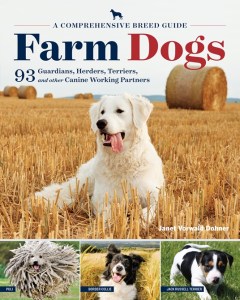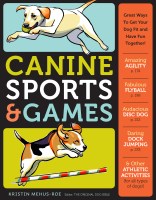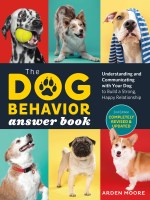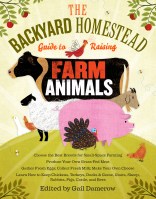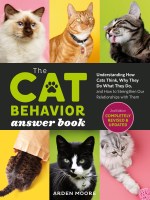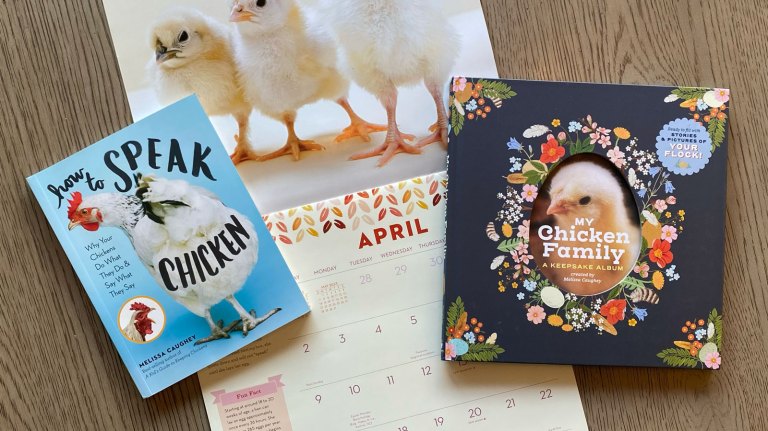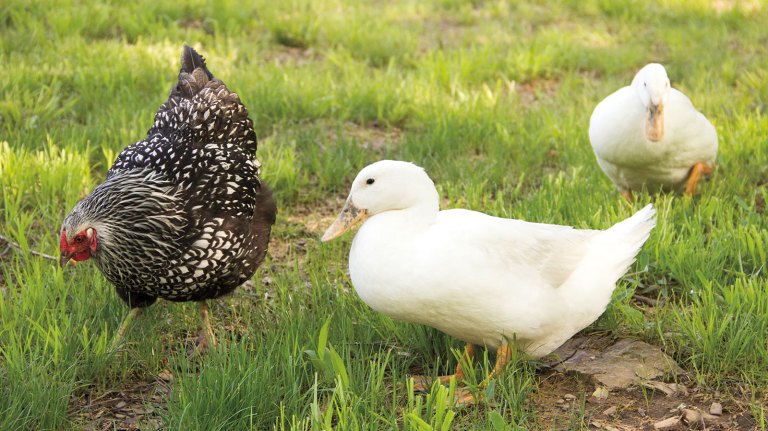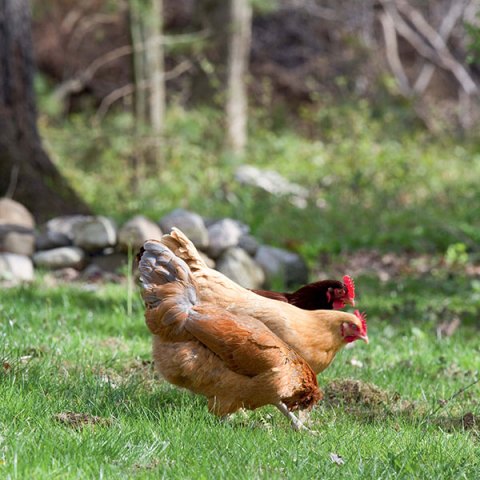Four Breeds of Farm Dog You’ve Never Heard Of
Looking for pups that can pull their weight on the farm? Get to know some of the most gifted kinds of working dog around.
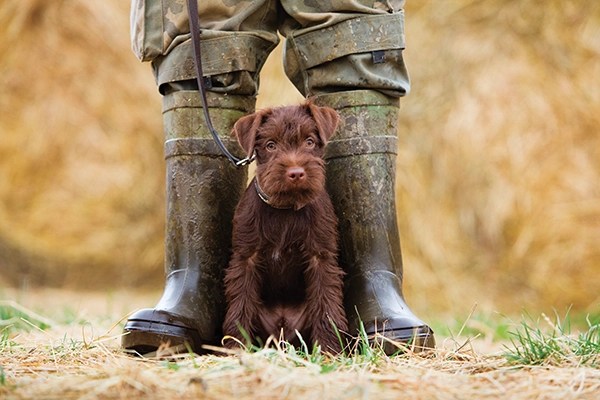
What do you see in your mind when you think of farm dogs? Probably sheepdogs first — agile Border Collies, old-style farm collies, shaggy shepherds, darting corgis, and tough stock dogs. Then there are the noble guardians that watch over flocks or herds and protect the property from intruders of all kinds. There’s usually a terrier or earthdog — sleek, tousled, or wiry — somewhere on a farm pursuing rats and other vermin in the barns and stables and around the outbuildings, or digging and crawling through burrows and dens. And don’t forget those great all-purpose dogs that traditionally did a little bit of everything on the farm from herding to protecting to small-predator control (some even pulled the farmer’s carts to market).
For millennia, humans lived and worked with a handful of canine types that were selected and bred to do particular work. Whether you’re looking for a true working partner or more of a family companion to a rural lifestyle, here are just are a handful of the breeds profiled in Farm Dogs that are well suited for country life and happy to be there.
Livestock Guardian Dog (LGD)
Kangal Dog
(KAHN-gall)
Also known as Kangal Kopegi, Sivas Kangal
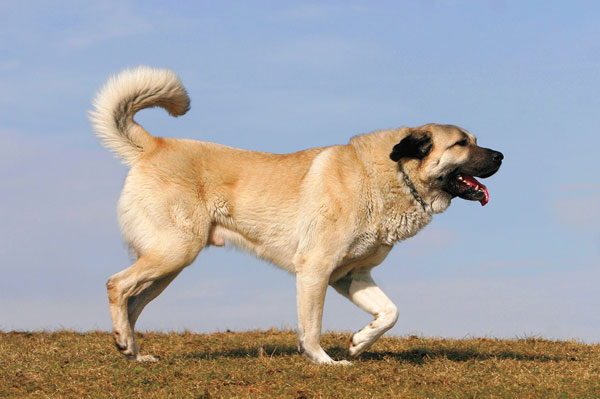
Origin: Turkey
Size: Male 30 to 32 inches, 110 to 145 pounds | Female 28 to 30 inches, 90 to 120 pounds
Coat: Short outer hair with soft undercoat
Color: Shades of dun to steel gray, with black muzzle, mask, and ears
Temperament: Independent, dominant, low energy, moderately reactive
History: The ancestors of the Kangal Dog may have come with Turkish tribes as they migrated from the steppes of Central Asia beginning in the eleventh century. The Turks were nomadic herdsmen who brought their sheep, goats, and horses with them, along with their war dogs, hunting dogs, and shepherd dogs. Genetic studies have, in fact, revealed that the Kangal Dog is related to livestock guardian dogs found today in the countries of Central Asia.
About the breed: Kangal Dogs grow up slowly, even compared to other LGD breeds. Goofy and adorable as puppies, at two or two-and-a-half years of age, Kangal Dogs become serious, protective, and watchful.
The Kangal Dog is noted for his solid temperament and gentleness with livestock, children, and pets. When Kangal Dogs hear or sense disturbances in the distance, they bark in response. At first, they place themselves between the threat and their stock. If their warning barks are ignored, they then confront the predator with a roar and an attack if necessary. They often take a remote or high viewing spot to watch their stock although they take regular patrols around their territory. These breed traits make the Kangal Dog well suited to life as a farm or family guardian in addition to a full-time livestock guard dog.
Herding Dog
Louisiana Catahoula Leopard Dog
(cat-a-WHO-la)
Also known as Catahoula, Catahoula Leopard, Catahoula Cur, Leopard Cur
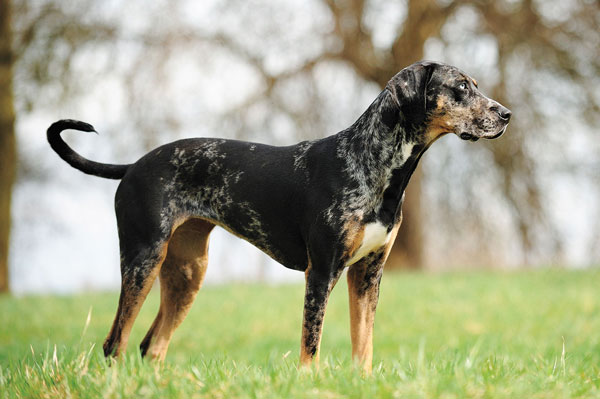
Origin: Louisiana, USA
Size: Male average 24 inches, 65 to 75 pounds | Female average 22 inches, 55 to 65 pounds
Coat: short to medium hair
Color: All colors and patterns, with white not exceeding 70 percent
Temperament: Dominant, independent, high energy, high prey drive, upright, loose eyed, close, gather, header
History: The Catahoula — called variously Catahoula, Louisiana, or Leopard and cur, dog, or hound — emerged out of a true melting pot of dog types, abilities, coats, and colors that existed in the southern states at the beginning of the nineteenth century. By the 1850s, across the Gulf Coast region, the Catahoula cur was well known for catching cattle or hogs. Jim Bowie and Teddy Roosevelt both owned Catahoula curs.
About the breed: The Catahoula is an intelligent, willing, and enthusiastic dog. He is also focused and assertive and works aggressively. With great endurance and high energy, a Catahoula needs at least one hour of daily running exercise. He also needs work, obedience training, or other activities for his mental stimulation.
Catahoulas are alert, naturally protective watchdogs that bark loudly, bluff, or display; some confront intruders. With combined hunting and herding instincts, they catch and bite. They are noted escape artists and must be securely fenced. Catahoulas are used in hunting and tracking many types of game, including feral hogs.
Terrier/Earthdog
Patterdale Terrier
Also known as Black Fell Terrier, Smooth Fell Terrier, Fell Terrier
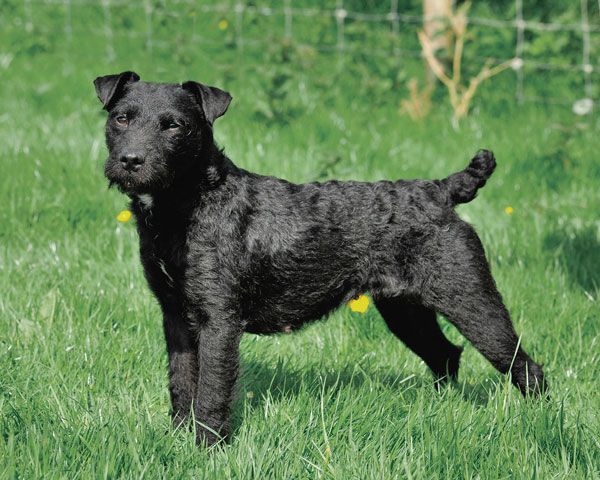
Origin: England
Size: 10 to 15 inches, weight proportional
Coat: Smooth, broken, or rough hair with soft undercoat
Color: Black, chocolate, red, or black and tan
Temperament: Independent, high energy, high prey drive, focus, pluck
History: The rocky hills or fells of the Lake District provided grazing for sheep, which in turn provided targets for foxes. The fox was hunted by packs of hounds and foxhunters, often on foot, accompanied by native fell terriers. There was much overlap between the founding members of the fell terrier breeds. By the 1950s, Lake District terriermen had developed a specific type of black fell terrier and the name Patterdale became associated with this type.
About the breed: These dogs need lots of exercise and play. Puppies, in particular, can be terrifically bold and highly energetic. They can live with other dogs in the home but are not as tolerant with strange dogs and are not recommended for homes with cats or other small pets. With their high prey drive, they must have a fenced yard.
Willing to please, Patterdales respond best to positive training rather than harsh treatment. They are usually not dominant with their owners, but some Patterdales can be pushy. Given the breed’s healthy streak of independence and stubbornness, owners need to be patient and have a sense of humor when asking a Patterdale to perform.
Traditional/Multipurpose Farm Dog
Leonberger
(LEON-ber-ger)
Also known as Leo

Origin: Germany
Size: Male 28 to 31.5 inches, 120 to 150 pounds | Female 25.5 to 29.5 inches, 100 to 135 pounds
Coat: Medium to long with dense undercoat
Color: Lion yellow, red, reddish brown, pale yellow to cream, and shades between these colors; all with black mask; coat hair may have black tipping
Temperament: Dependent, submissive, low energy, low reactivity
History: The Leonberger is a majestic giant who is true to his main function as a good family dog, although his origins are unclear. Part of the story lies in the Victorian Age, when large, impressive dogs were greatly in demand. An animal breeder and marketing genius named Heinrich Essig, born in the early years of the nineteenth century in Leonberg, Germany, was a major breeder for several decades, often gifting nobility and celebrities with his Leonberger dogs as a public relations ploy.
About the breed: A Leo is above all else a family dog. Bred to be a good companion, he is not happy being kenneled away from his family and their activities.
Leos have earned the nickname “Lean-on-berger” because they lean on or jump up in greeting if not trained. While not an aggressive breed, this is a strong and powerful dog with a deep bark and protective presence.
The breed is well suited to country life and can contribute some work as a drafter as well. Leos do not need a large amount of exercise but are more athletic than many other giant breeds and they love water. Swimming and water work, hiking, drafting or carting, weight pulling, nose work, search and rescue are all enjoyable activities for them.
Text excerpted and adapted from Farm Dogs © 2016 by Janet Vorwald Dohner. All rights reserved.
